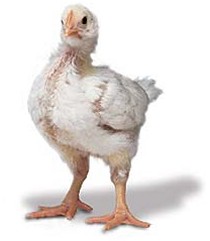Spread of Virus
Infectious bursal disease is highly contagious. Due to the hardy nature of the virus it persists in the environment of the poultry house, infections are thus potentially carried over from one cycle to the next.
IBDV is not vertically transmitted (no transmission from parent to day old chick through the egg). Horizontal transmission through infected faeces, contaminated equipment (especially footwear) or other organic material is the most likely route of spread. It has been demonstrated that the lesser mealworm (Alphitobius diaperinus) could act as a vector carrying IBDV from one cycle to the next.
A thorough clean out of a site following a IBDV infection is thus required.
- All infected litter and carcases of infected birds must be suitably disposed of away from the site or any other poultry operation.
- A thorough well planned disinfection regimen must be implemented.
- Downtime between successive flocks must be maximised. (A minimum of 10 days is recommended between successive broiler flocks.)
Peer Reviewed by Dr J J (Sjaak) de Wit and William Baxendale.

